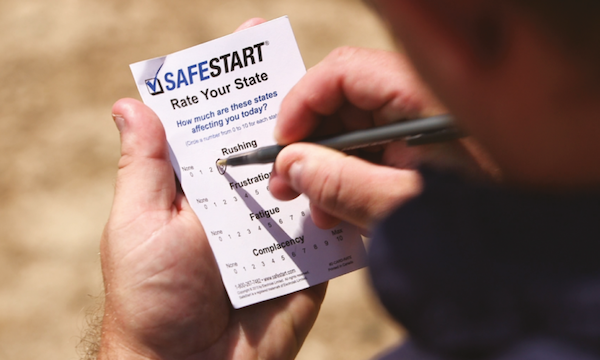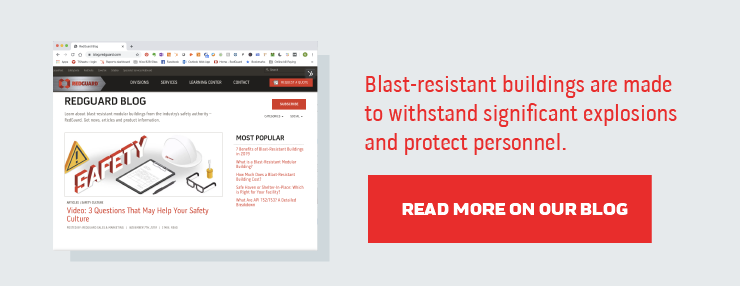Safety and Regulations | Culture
Safety As a Practice and How We Do It at RedGuard


Having a safety culture isn't about just "talking the talk." You've got to "walk the walk" too. If you spend any amount of time at RedGuard, you'll quickly learn that our safety culture comes with practice. We support our belief in the importance of safe practices not just by what we say, but also in what we do.
You may have heard us mention our safety program at some point. We have aligned with SafeStart, a safety and human-error reduction program that has helped us realize a reduction in workforce injuries over the years it's been in place and to maintain the safe practices that we take pride in. The safety program has helped us increase our personal safety awareness, safety skills and improve performance. We've even received awards for our implementation and have been recognized by SafeStart as a safety leader.
But what does a safety culture look like in practice? Here are a few examples:
How Would You Rate Your State?
The first time I heard the phrase "how would you rate your state?" I have to admit that I was a little confused. I thought, "Well, I guess Kansas is okay. I mean, I've lived here thirty years. We do have really beautiful sunsets, but I guess we could improve the condition of the roads..."
As it turns out, that's not what "Rate Your State" is about - at all. It's actually a practice that helps those who have learned the SafeStart skills sustain those practices, by fostering communication and thinking about your habits. RedGuard keeps stacks of the "Rate Your State" cards around the worksites and offices. At any time at RedGuard, a co-worker (it could be a peer or a manager) might approach you to talk to you about your "state" using a few simple prompts. Or, you might decide that it's something that you need to pause and do as a self-reflection.
The exercise is pretty basic and takes fewer than 10 minutes to do. At RedGuard, we encourage the practice by proactively handing out the Rate Your State cards once a month. Participation is optional, but if a team member does choose to participate, there's a gift card drawing each month. The exercise, as mentioned, is either self- reflective or with questions asked by a peer or manager. The card asks the subject how much the (following) states are affecting them, on a scale of 0 to 10.
reflective or with questions asked by a peer or manager. The card asks the subject how much the (following) states are affecting them, on a scale of 0 to 10.
- Rushing
- Frustration
- Fatigue
- Complacency
Notes can be included, as well, and there's an opportunity to ponder what critical errors you might be in danger of making due to the states that are affecting you. And, in an effort to make the situation better, the practice involves thinking about what error reduction techniques you can apply to improve your situation.
It's an easy exercise that collectively, yields powerful results.
Does anyone have a SafeStart story?
Before we start any meeting at RedGuard, you will almost always hear that question. We believe that safety should be top of mind. So, before we get along with the day or our meetings, we ask volunteers for an example of a time when they had (or observed) a safety-related near-miss or an incident to share that we can all learn from.
Stories are powerful tools, and when they are at the level of your peers, they are often relatable. In our SafeStart moments - I think they're actually called "Toolbox Talks" - anyone can speak up, the story can be serious or funny. The goal is to learn from our mistakes and from the experiences of others. Our personal stories are genuine and allow us to be vulnerable. We talk about the incident - what happened, the states that led to the incident, the errors that were made, how it was prevented (if it was a close call) or how it could've been worse. SafeStart Stories are a great way for us to keep safety top of mind throughout the day.
There are more parts to an effective safety program, but these two examples illustrate the ways we reinforce an understanding of the states that lead to critical errors. These practices ensure that our team members understand that human factors (good or bad) contribute to safety outcomes, they encourage open communication at both a peer level and between managers and their direct reports, it promotes a no-blame culture that encourages trust and engagement.
If you're looking for ways to cultivate a culture of safety, you can read about it on our blog! 
Carreen Gibbons
Carreen Gibbons is the Communications Specialist at RedGuard. With a natural curiosity toward technical subjects and a love of learning new things, she writes content for the SiteBox Storage and RedGuard websites and spends her days learning new things about the industries that the companies serve.

